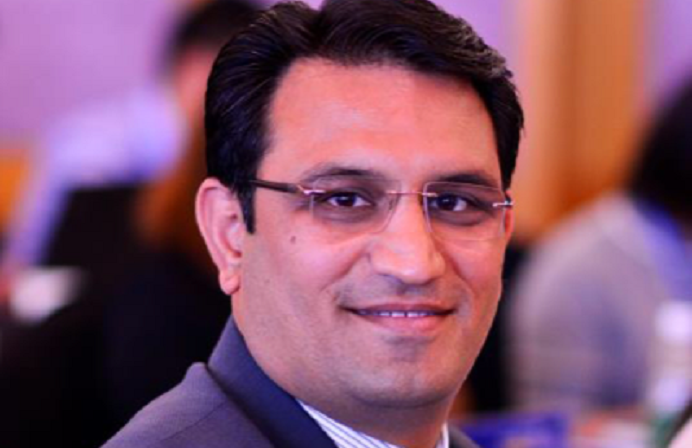
In a region at the forefront of innovation in financial services, Citibank Singapore has set itself apart from its peers through heavy investments in human-centred customer journeys.
We recently spoke with Nilesh Kumar Jain, head of digital channels and experience at Citibank Singapore and a 20-year veteran of ASEAN’s digital banking sector, on how Citi is navigating its path to ‘hyper-personalised’ customer experiences, on delivering a winning omnichannel service offering, and what’s trending in Singapore’s future-forward fintech landscape.
FST Media: In an environment where customer satisfaction is lowering among Singapore’s Banks, Citi has bucked this trend and improved their CX outcomes. How does Citi set itself apart from its peers in customer experience?
Jain: Citi’s approach towards CX has been multi-faceted.
Firstly, we foster a culture of cross-functional collaboration in which every department works cohesively towards shared CX goals. We’ve created platforms where our employees come together and actively co-create solutions, drawing from their unique insights and experiences.
This ensures that CX isn’t a buzzword for us; it is ingrained from top to bottom in our organisation.
Additionally, we look beyond mere customer survey responses, leveraging the wealth of data available to us by diving into customer behaviour analytics. This allows us to personalise our services and proactively address pain points.
Finally, at the heart of our exceptional CX lies our commitment to hiring the right people to drive this capability. Our team members not only bring diverse experiences and necessary skills, but also have a profound empathy for our customers and they are passionate about understanding and improving the customer journeys.
FST Media: What is Citi doing to ensure it can continue to deliver a peer-leading, seamless, and secure customer experience?
Jain: Citi has a comprehensive CX strategy in place focusing on VoC (Voice of Customer), journey enhancements and employee engagement.
In addition, we invest heavily in technology and innovation. This includes regularly updating our digital infrastructure, introducing new features, and enhancing our digital platforms.
This aside, security is paramount for us. We continuously monitor and improve our security measures to protect customer data and financial transactions. This includes implementing cybersecurity measures and regularly auditing our systems.
We employ the latest encryption and authentication methods to ensure that our customers’ information is kept safe.
We also have a team of well-trained call centre agents to ensure that our customers have a positive experience even in challenging situations.
FST Media: Success in any digital CX program demands a mix of competencies, from cross-business collaboration and the ability to achieve executive buy-in, and an understanding of compliance and accessibility concerns, to an appreciation of human-centered and UX design principles.
Take us through some of the biggest challenges you’ve faced whilst leading several digital CX programs. And how have you sought to overcome these hurdles?
Jain: Leading digital CX programs comes with its challenges, of course. Collaboration across different departments, which have their unique priorities, can be complex, but we’ve prioritised shared goals, and have clear communication channels and regular cross-functional meetings to overcome those challenges.
Gaining executive buy-in requires showcasing ROI dollar value generated through experience upgrades, as well as long-term benefits. Compliance and accessibility concerns are paramount, especially in the financial sector.
We’ve navigated this by closely working with our legal and compliance teams to ensure that our digital initiatives meet all the regulatory requirements.
Ensuring our design process focuses on human-centred and UX principles relies upon us gathering feedback from both customers and employees, user testing and consistently iterating our designs to create intuitive digital experiences.
FST Media: FSIs have had mixed success delivering true omnichannel experiences. What do you think defines the ideal omnichannel experience in the financial services ecosystem? How, ultimately, should omnichannel enhance the customer experience?
Jain: The ideal omnichannel experience in a financial services ecosystem is characterised by a seamless, consistent, and personalised journey for customers across all touchpoints. It essentially means that, irrespective of the touchpoint a customer interacts with, the experience needs to be integrated and customised to their preferences based on a deep understanding of the customer.
[An omnichannel capability] allows customers to transition between channels effortlessly, minimise frictions, maximise satisfaction and, ultimately, nurture loyalty and trust in the bank’s offerings.
Integrated technology, leveraging data analytics, creating customer-centric designs and continuously gathering and acting on customer feedback are the most important elements to achieve an ideal omnichannel experience.
FST Media: Personalisation has proved, for many digital businesses, that elusive pot of gold at the end of a service rainbow.
What, to you, is the ideal level of personalised service for a bank to provide customers? And what’s still standing in the way of enabling this ideal level of personalisation?
Jain: The ideal level of personalised service for a bank is one that strikes a balance between meeting customers’ individual needs and respecting their privacy and security.
While banks should aim to provide personalised recommendations, product offerings and communication that aligns with customers’ goals and behaviours, some of the challenges that stand in the way of the ideal level of personalisation could be data silos and the accuracy of the data available.
That aside, adhering to the stringent regulations around the use and protection of customer data and data privacy is of paramount importance as banks strive to personalise their services.
FST Media: As the digital threat landscape continues to evolve, how can organisations better integrate security (and with the right levels of friction) into their CX strategies and deployments?
Jain: Integrating security effectively into CX strategies and deployments while maintaining the right levels of friction is a complex task, but it is extremely critical.
The right approach here is to adopt a user-centric design approach, from which security measures are seamlessly integrated into the user interface, ensuring minimal disruptions to the customer journey.
Such an approach will strike a balance between safeguarding against digital threats and providing a smooth, frictionless experience for customers.
On top of that, the organisation needs to ensure that the security measures are clearly communicated to customers, which builds trust and manages their expectations.
FST Media: What has been the impact of emerging technologies like AI (including Gen AI) and blockchain on Singapore’s financial landscape?
Jain: AI has moved beyond experimentation to become a foundational element in next-generation financial services in Singapore, and the adoption of AI is projected to grow at an astonishing pace in the coming years.
Notable developments encompass AI’s role in chatbots, fraud detection, biometric authentication, credit decision-making, personalised recommendations and robo-advisors.
Blockchain is poised to transform finance, most notably transaction banking. It streamlines payments and title transfers by eliminating third-party involvement.
The key areas where blockchain will have an impact are investment services, payments and trade.
One of the emerging digital technologies is regtech, or regulatory technology, which is the use of technology to enhance risk management and regulatory compliance in financial institutions.
FST Media: What have you found to be the most rewarding part of leading business transformation projects?
Jain: The most rewarding part of leading a transformative project is witnessing the positive impact on the organisation. It’s fulfilling to see how the changes initiated result in improved efficiency, productivity, and customer satisfaction.
Additionally, achieving the project’s goals and witnessing a more agile and competitive organisation can be highly gratifying.
Finally, the personal growth and learning that come from managing complex transformations are also rewarding, as they can lead to valuable insights and career advancement. ■





